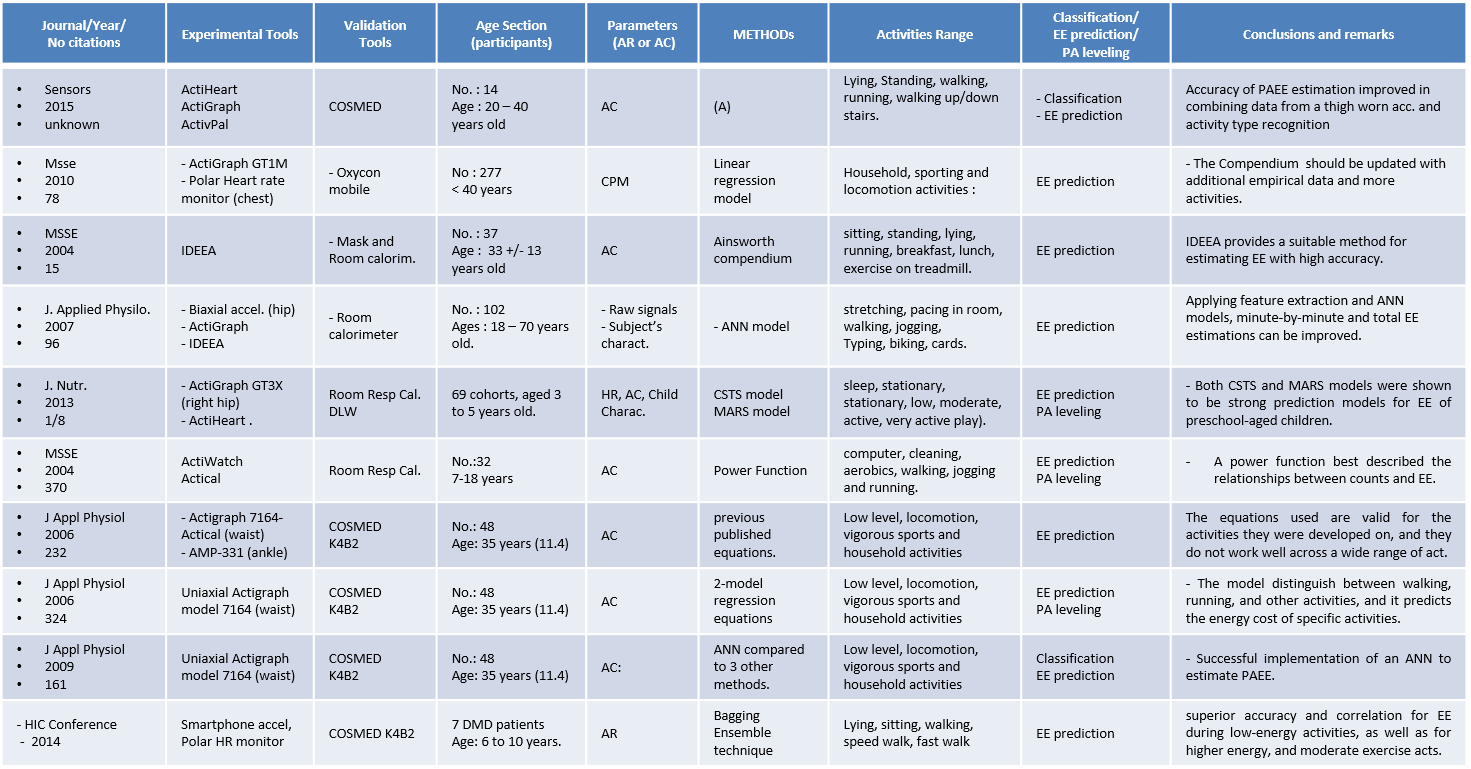Interest of Energy expenditure estimation
For all those wondering about the real need to quantify the Physical Activity (PA), and about the reason why all these research programs for more than a decade are dedicating their efforts to precisely measure the energy expended during daily life activities, here’s a brief summary that clarify the relationship between health status and PA. For the majority of our population, exercising is without any doubt good for one’s health but we are not sufficiently aware of the intensity, the duration as well as the level of dynamic energy demands required by our bodies to maintain a healthy lifestyle.
In fact, the assessment of energy expenditure in free living subjects has long held a central place in human biology research to afford a complete understanding of the etiology of among others, obesity, malnutrition, coronary heart disease and osteoporosis [1,2].
Based on the IPAQ (International Physical Activity Questionnaire) held between 2002 and 2004 from 20 different countries, the World Health Organization (WHO) reported that the surveillance of population levels of PA using standardized protocol is an important and necessary part of public health response to current concerns regarding lack of PA in many populations [3]. The health benefits of PA was confirmed by research studies since several decades. It is now clear that regular PA reduces the risk of morbidity and mortality from several chronic diseases and increases physical fitness, which leads to improved function [4]. A study conducted in 2004 by Hu FB et al. showed that an increase in energy expenditure from physical activity of 1000kcal (4200 kJ) per week or an increase in physical fitness of 1MET (metabolic equivalent) was associated with a mortality benefit of about 20% [5]. Physically inactive middle-aged women (engaging in less than 1 hour of exercise per week) experienced a 52% increase in all-cause mortality, a doubling of cardiovascular related mortality and a 29% increase in cancer-related mortality compared with physically active women [6].
Furthermore, physical inactivity is associated with a number or risk factors for hyperlipidemia, hyper-tension, cardiovascular disease and type 2 diabetes [7, 8]. Investigators reported that each increase of 500 kcal (2100 kJ) in energy expenditure per week was associated with a decreased incidence of type 2 diabetes of 6% (relative risk 0.94, 95% CI –0.90 to 0.98) [9]. This benefit was particularly evident among people at high risk of diabetes (i.e., those with a high body mass index). Other studies showed that moderately intense levels of physical activity (≥5.5 METs for at least 40 minutes per week) and of cardiovascular fitness (>31 mL oxygen per kilogram per minute) have also been shown to be protective against the development of type 2 diabetes in middle-aged men, with an even greater effect among those at high risk of diabetes [10].
Another aspect that is none negligible is that the monitoring of EE increases the awareness of sedentary and unfit stratum of the population regarding the levels of EE needed to reduce health problems associated with physical inactivity and serve as a useful element to promote lifestyle changes and emphasize them to do at least moderate PA. There are probably 40 million adults in the US whose sedentary habits place them at considerably increased risk of morbidity and mortality from several diseases [4]. Subsequent studies have shown that an average energy expenditure of about 1000 kcal (4200 kJ) per week is associated with a 20%–30% reduction in all-cause mortality [11]. Most analyses have shown a reduction of at least 50% in mortality among highly fit people compared with low-fit people [12]. An important point is that it does not matter what type of physical activity is performed: Sports, planned exercise, household or yard work, or occupational tasks are all beneficial. The key factor is total energy expenditure; if that is constant, improvements in fitness and health will be comparable [4].
Synthezise of the litterature revue
The following table covers all the estimation methods of energy expenditure. Experimental, validation tools, participants and methods are briefly discussed.
Proposition of an original framework
Litterature review exhibits that the ventialtion signal is often forbidden in the estimation of the Energy Expenditure except through the respiration rate. This observation lead us to propose an original framework (see the figure just below) for the the second year of the project. Our goal will be to developp:
- an original physiological model of the ventilation and combine it with classical energy expenditure estimation method. The validation of the model will be done with the Cosmed K4B2 system.
- an estimation of the ventilation signal directly from the ECG in different condition (rest, walking, running, …) in order to reduce the number of sensors.
- After the design of the model and the estimation of the ventilation signal, optimization of the parameters will be done in order to propose a user specific model parameter estimation and consequently energy expenditure estimation.

